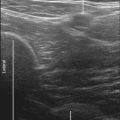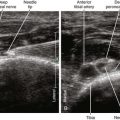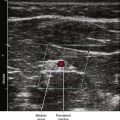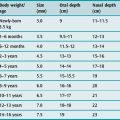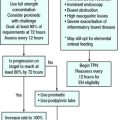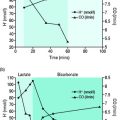Taking care of your health doesn’t always mean going to the doctor. Many things can be checked at home to help you stay in control of your well-being. While some health tests need a nurse or GP, there are quite a few you can do on your own with the right tools and knowledge.
This article looks at what’s safe to monitor from home, when to ask for help, and how regular checks can help prevent bigger problems later on.
Why Home Health Checks Matter
It’s easy to put off thinking about your health if you feel fine. But just like the NHS Health Check programme explains, some serious health conditions develop slowly and without symptoms. Regular checks can pick up early signs of problems such as high blood pressure, raised cholesterol, or blood sugar levels that may point to a risk of diabetes.
Some checks are best done by a healthcare professional. Others, you can do yourself, especially if you understand what the results mean and when to seek further help. Home checks should not replace professional advice, but they can give you useful information between appointments.
What You Can Monitor at Home
Blood Pressure
High blood pressure is a really common problem, but lots of people don’t even know they have it. It’s a big reason why people get heart disease and stroke. You can buy a home blood pressure monitor from most pharmacies.
They are easy to use. Sit calmly, rest your arm on a table, and follow the instructions. It’s a good idea to take two or three readings and write them down. The NHS says a healthy reading is around 120/80 mmHg. If your numbers are often higher than 140/90 mmHg, you should talk to your GP.
Weight and Body Mass Index (BMI)
Your weight and height can help you work out your BMI, which is one way to tell if you’re a healthy size. There are plenty of online BMI calculators, or you can work it out manually. Though it’s a basic tool, it’s a good starting point for keeping an eye on changes over time.
If your BMI is above 25, it may suggest you’re overweight. Below 18.5 could mean you’re underweight. Both can carry health risks.
Waist Size
Your waist measurement can tell you if you’re carrying too much fat around your middle, which is linked to higher chances of diabetes, heart disease, and stroke.
If you’re a boy, and your waist is more than 94 centimetres (about 37 inches), it might mean you have a higher risk.
Heart Rate and Rhythm
You can find your pulse on your wrist or neck. Count how many beats you feel in thirty seconds, and then double that number. That’ll tell you your resting heart rate.
Your resting heart rate is usually okay if it’s between 60 and 100 beats per minute. Irregular rhythms or heart rates consistently outside this range should be discussed with a doctor.
Blood Sugar (with a home test kit)
Some people use home blood sugar testing kits, especially if they are at risk of diabetes. A finger-prick test gives a reading in mmol/L (millimoles per litre).
If your reading is often above 6.0 mmol/L before meals, or above 7.8 mmol/L after, you should speak with your GP.
It’s worth noting that these kits may not be fully accurate unless used properly. If you have any worries, a formal test arranged through your surgery is better.
Where Does This Fit With NHS Health Services?
The NHS Health Check programme offers regular checks for people aged 40 to 74 who do not already have certain long-term health conditions. It includes professional checks for blood pressure, cholesterol, and more. The goal is to reduce the risk of serious conditions like stroke and heart disease.
The WHO cardiovascular risk facts also highlight the global burden of cardiovascular disease, emphasising the need for regular monitoring to reduce risks linked to high blood pressure, obesity, and lifestyle factors.
When to Seek Medical Advice
If your home checks show something unusual more than once, don’t ignore it. Make an appointment with your GP. That includes:
- High blood pressure readings
- Very low or high resting heart rate
- Changes in weight or waist size without trying
- Irregular heart rhythms
- High or low blood sugar levels
Changes like these are often easier to manage when picked up early, so it’s worth acting sooner rather than later.
The Role of Private Health Screening
Some people want a broader check of their health or quicker access to testing. In these cases, private screening might be a good option. Vista Health is one provider offering private Health Check services. These may include extra tests like full blood panels or imaging scans.
They can be helpful if you want to know more about your current health or if you’re outside the NHS age group. This type of screening should not replace seeing your GP, but it can support your health by offering early feedback or reassurance.
Keeping Track of Your Results
If you do checks at home, write down your results or store them in a health app. That way, you can spot patterns and share them with a healthcare professional if needed.
Try to be consistent: check at the same time each day or week, and follow the same method. This helps you learn what’s normal for your own body.
Final Thoughts
Keeping an eye on your health at home can help you notice small shifts early. These may not feel important at first, but could point to something worth checking out further down the line. While not everything can be checked at home, monitoring your weight, blood pressure, heart rate, and waist size is a safe place to start.
Just remember: these checks don’t replace regular appointments with your GP. But they can help you notice when something’s not quite right. If in doubt, always ask a professional.
Whether you’re trying to stay healthy, support someone else, or keep track of your risk factors, doing basic checks at home is one more way to look after yourself.
If you’re between 40 and 74 and haven’t had a recent check, you may be due for an NHS appointment. Speak to your surgery and ask when your next Health Check is due.

